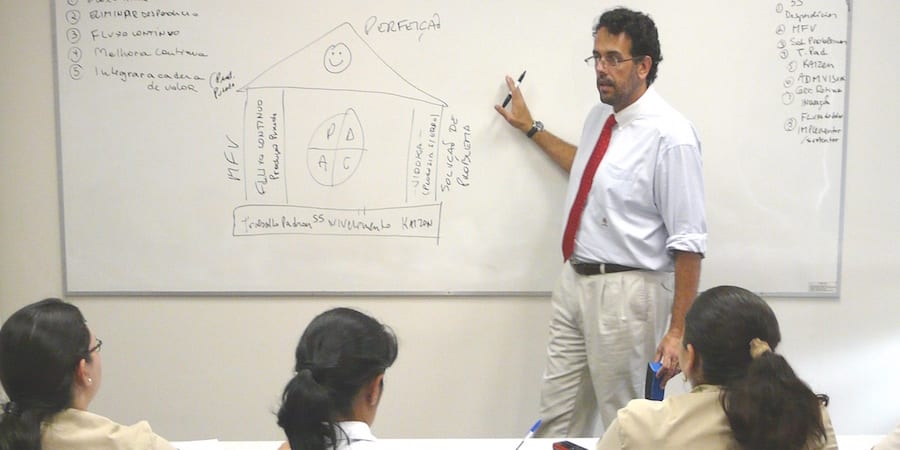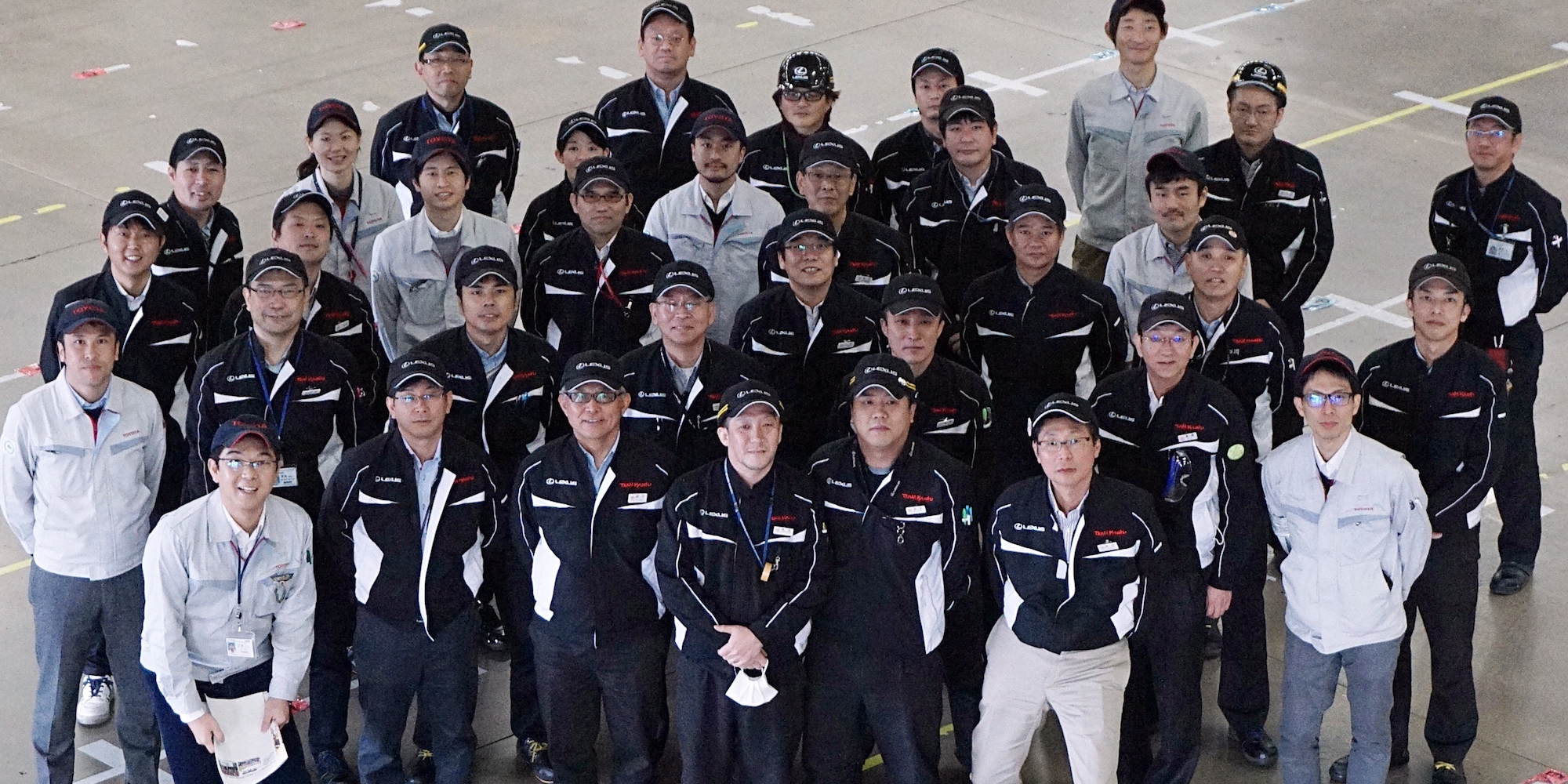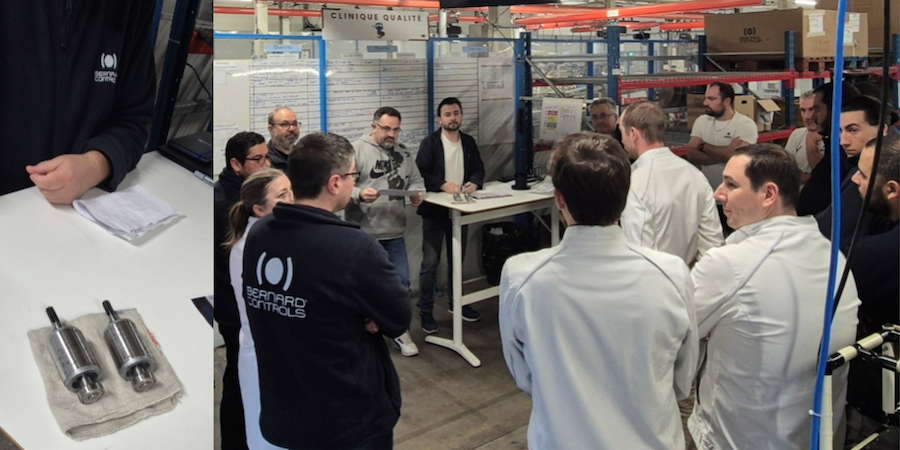
Lean leadership means advocating problem solving at gemba
PROFILE – It isn’t every day that you come across a hospital CEO coaching people on A3s and following his own standard work. So when you do, it’s important to share their story. This month we profile the CEO of a Brazilian cancer treatment center.
Profile on: Carlos Frederico Pinto, CEO, Instituto de Oncologia do Vale, Brazil
Words: Roberto Priolo, Editor, Planet Lean
Carlos Frederico Pinto took his first steps as a leader at the end of the ‘90s, around ten years after becoming an oncologist. His new role was to manage cancer patients care at the Instituto de Oncologia do Vale (IOV), near São Paulo. He brought to it a strong sense of unease with the current state of healthcare in Brazil. He wanted to change things, and felt that from his position of leadership he could perhaps start to improve the situation – at least locally.
He wasn’t wrong.
The turning point for him was in 2008, when he came across the white paper Going Lean in Health Care, which had been published three years before by the Institute for Healthcare Improvement.
“I hadn’t heard about lean at that point, and yet I immediately realized that was the way I should be managing. It took me a while to put the methodology in practice, but after some training and a successful value stream mapping exercise in 2008 it became clear that lean had the potential of transforming operations across our four outpatient cancer units and two cancer centers,” Pinto says. “So when we had to plan the future of IOV in 2009 I made sure that lean thinking became a big part of it.”
Over time, Pinto – who is affectionately nicknamed Dr. Fred – had the opportunity to learn a lot from implementations in other industries, as well as from the coaching provided by the Lean Institute Brasil.
IOV is part of the Hospital Regional do Vale do Paraíba (HRVP), didn’t have enough resources to hire consultants, and the Cancer Center team led by Pinto had to find a way to make lean happen by themselves. The first thing they did was discussing their future state and identifying their purpose: becoming a world-class player in cancer treatment and to reduce the burden of cancer in people’s lives.
“We are all touched by cancer in one way or another, and it is IOV’s goal to reduce the burden of this terrible disease. There is no doubt that lean is the best strategy we have to accomplish this goal,” Pinto explains.
WALKING THE WALK
When I ask him what his most important quality is, Pinto tells me: “Perhaps it’s the ability to stay the course, to remain focused on the mission. Constancy of purpose is paramount.”
But staying focused can be difficult, especially in challenging times. “There is a lot going on Brazil at the moment. We are in the middle of a huge recession, our public healthcare system is falling apart… there is always a crisis, but lean helps in such moments. What I have learned to do in the face of uncertainty is to sit down and reflect,” Pinto says.

Lean teaches us that it is necessary to look into a problem (and in the gap between current and future state) in order to solve it. And that’s how Pinto behaves. Understanding variation is of the utmost importance for him, even though he says lean literature is often not as clear about this as it should be, and certainly “not as clear as Dr. Deming was.”
Reflection on the problems we face doesn’t just happen. We need to build it into our daily work. To this end, Pinto applies a strict leader’s standard work routine to his own activities. He comments: “Every Monday morning I review my work and see how big the gap is between what I am doing and my aim. To improve you need to have a clear understanding of variation. When I sit back, I look at the variation we are facing and try to understand what is causing it.”
Sometimes the causes of variation are common and can be tackled fairly easily, sometimes they can’t. Last year HRVP’s budget was slashed by 30%, which in the Brazilian public healthcare system corresponds to 30% fewer patients sent to the facility, despite it having the required capacity. There was nothing Pinto could do to change the situation. However, instead of firing people when the crisis hit and the budget was cut, they started to use the time that had suddenly freed up to develop its professionals.
“Without lean the first thing I would do would probably be laying people off in a time of crisis. Luckily, the philosophy showed me a better way,” Pinto admits. Not only did IOV not lay off a single person last year, but it was also among the best performing organizations in the healthcare group it belongs to.
This is an extraordinary result, especially considering that IOV merged with this national healthcare group (35 facilities, six of which are IOV’s and responsible for a third of the total amount of patients) just over two years ago. Mergers can be lean’s worst enemy: new partners who don’t share our view of what it means to manage can easily kill our improvement efforts. While finalizing the deal, Pinto agreed with the new partners that IOV’s management system would not be touched for at least three years and that if the organization could prove it worked it would be allowed to carry on with it.
“The merger was a real leap of faith,” Pinto recounts. “But the outstanding results we are achieving have built our case with the new partners and are allowing us to keep our lean transformation going.”
CHANGING AS A CEO
Lean is a journey of self-discovery, especially for the person responsible for leading its application in an organization. It forces us to let go of all the things we think we know and to embrace a radically different way of interacting with others and approaching problems.
In many ways, Dr. Fred has the enthusiasm of a lean neophyte: he is humble in his approach and passionate about the fundamentals of the methodology, but also confident in its tools and principles. He uses them on a daily basis (he is particularly fond of value stream mapping – “there is nothing more powerful than a VSM exercise”) and constantly practices what he preaches.
“What I learned since discovering lean is that you can only be effective as a CEO if you spend your time at the gemba with a clear purpose,” Pinto comments. “It changes your whole way of understanding problems.” Pinto goes to the gemba every single day and participates in at least one rapid improvement event each week (as per his standard work). The hospital has also implemented a system – called kaizen shifts – under which there are special times of the week during which people work on their A3s, and Pinto makes sure he coaches at least one person on an A3 every week – “no matter how small the problem might seem.” This is an important part of IOV’s people development efforts.
According to Pinto, convincing people that the gemba is the place to go is one of the hardest things he has to do. He says: “Hospitals are environments characterized by the presence of specialists (doctors, pharmacists, nurses and so on): they are highly trained and getting them to understand the importance of going to the gemba is a great challenge!”
Pinto admits he finds it fascinating how hard a time doctors have accepting lean, when all the methodology asks of them is that they apply the same rigor and thinking that they use to diagnose and treat patients to improving the processes around them. However, he also says that he spends a lot of his time defending his colleagues: “Doctors are often a hospital’s scarcest and most expensive resource. All they need is to have the patient ready in front of them when they need them to be. So, before we try to involve them in any changes we make sure the process works and that everything is aligned. When they see the system is working, they get curious and want to jump in.”
Getting people involved is something Pinto has worked on for years, and he clearly takes great pride in the work that he does to train IOV’s professionals in lean. “At the end of the month, CEOs always look at the wrong numbers. Rather than focusing on cost accounting and making money they should strive to develop their people and improve processes at the gemba,” he concludes. This approach has certainly served IOV well. There is no reason to think your organization would be any different.

Read more


INTERVIEW – A team from LGN just spent a week on the gemba with Toyota veteran Hideshi Yokoi for a jishuken exercise. We asked him to explain to us how he used this practice while at Toyota Motor Kyushu.


ARTICLE - We always talk about going to the gemba, but we often don't understand what that entails and what changes it can bring to our companies. In this article, we hear about the experience of Thales.


WOMACK'S YOKOTEN – Last month nations signed a greenhouse gas emissions deal – on paper, an insurance policy against climate change. But if action is to follow promises, the cost of the insurance premium, as perceived by voters and governments, must be lowered. Lean thinking can help.


CASE STUDY – Lean Thinking helped Bernard Controls Europe improve efficiency, reduce lead times, and enhance quality, fostering resilience in the post-pandemic industrial landscape.

